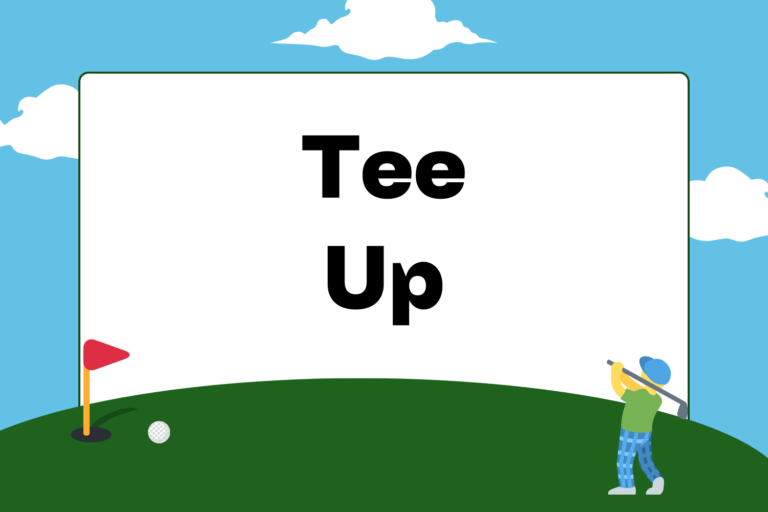Golf is not a cheap game. First you buy the major things — you pick out a set of clubs, stock up on some golf balls, and buy a good-looking golf bag to put them in. Then you start shopping for all of those little things, like a glove, a pair of golf shoes, tees, and a ball marker. Then you spend money on some more extravagant accessories, like GPS tools and remote controlled pull carts.
And all of that before you even take a swing! Tack on some lessons, driving range trips, and actual greens fees at the golf course, and you can start to see why golf can take such a heavy toll on your wallet.
But if you’re a golfer on a budget, fear not! There are tons of ways to save money on and around the golf course — you just have to know a couple of things: your game, your budget, and where to look.
Golf Equipment
Buying equipment is one of the most expensive parts of golf, but if you know what to look for and where to look for it, you can save a lot of money without having to sacrifice too much quality.
Golf Clubs
Whether you buy them in sets or individually, golf clubs can feature some pretty incredible price tags. Depending on what you’re looking for, though, you can usually save a lot of money by keeping the following tips in mind:
Buy used clubs:
There are more used golf clubs out there than there are new clubs, so go out there and explore your options. It won’t be hard to find high quality, well kept, previously owned golf clubs. Just make sure you buy them in person, so you have a chance to swing the clubs and check their condition.
Buy demo clubs:
Demo clubs are available in almost every pro shop for golfers to try out the latest and greatest golf clubs before purchasing them. Most of these demo clubs are eventually sold, not long after they’re put out for use, and usually for a generously discounted price. Ask your pro shop’s manager about buying a demo club right off the floor, and chances are you’ll be the first to know when the club’s up for sale.
Don’t rent clubs:
Unless your course provides free rentals, they’re probably getting away with making a lot of profit on a relatively cheap investment. If you plan on playing golf more than once in your life, you’ll save a lot of money by investing in an affordable set of used clubs. Take care of your clubs: The best way to save money on new golf clubs is avoiding the need to buy new golf clubs. Take good care of your current set of clubs by cleaning them regularly after each use, re-gripping them if the grips get worn down, and keeping them safe in protective head-covers (old socks will work, if you really want to save money).
Golf Balls
Depending on how serious of a golfer you are, you might prefer investing in a more expensive type of golf ball. There are tons of options out there, so keep these tips in mind when out shopping:
Know your game:
The key to saving money on golf balls is honesty. Know what kind of golfer you are, and know how many golf balls you can expect to lose per round. Then you can decide whether or not investing in high performance golf balls is worth your money.
Buy recycled golf balls:
If you’re not a competitive golfer, but you still want to play a higher-performance golf ball, a good, wallet-friendly option is to buy recycled or salvaged premium golf balls. You can expect the price tags for these recycled golf balls to be half of what you’d pay for their brand new counterparts, but you’ll still get a lot of the benefit of a premium golf ball.
Buy cheap golf balls:
This advice may seem a bit obvious in a guide about saving money, but if you’re new to golf or lose an average of five or six golf balls per round, you might as well play with cheaper golf balls. Your game isn’t at the level it needs to be to see any of the benefits of a more expensive golf ball anyway, so save yourself money and stress by playing the cheapest golf balls you can find.
Amazingly True Story
In the early 1940s, Lee Trevino was a poor kid in a poor family in Texas. He worked cotton fields as early as five years old to help his family make their way. But not long into his life, he was introduced to golf by his uncle, who gave him an old golf club and a few beaten-up golf balls.
Soon a young Trevino got a job caddying at local golf courses, practicing his own game after every workday. He even practiced hitting pine cones when he wasn’t at the course.
After four years serving as a U.S. Marine, Trevino returned to the game of golf, picking up where he left off. It wasn’t long until he defied golf’s “country club” and “rich kid” stereotypes to become one of the greatest golfers of all time.
He went on to win six major championships. He’s taught innumerable students the game of golf, and has become one of golf’s most beloved ambassadors. Lee Trevino’s story proves that heart and determination are far more important in golf than any privilege or money.
Golf Outings
Once you’ve gathered your equipment together, you’re ready to play. Almost. You’ve still got to hire someone to give you lessons. And you have to spend some time on the range, which isn’t free, either. Finally, you get to head to a golf course and pay the greens fees to play there. Oh, and the most expensive part of all of this? It goes on forever, for as long as you play golf, in cycles that never end.
If the excitement of improving and the fun of playing on beautiful courses still isn’t enough to make up for the amount of money you’ve poured into this sport, you can feel better and save money by keeping the following in mind.
Golf Practice
Whether you’re new to golf or a seasoned veteran, you’re going to spend a lot of time and money on practice if you want to improve your game. Here are some keys to staying in your budget while you improve:
Take group lessons:
If you’re just starting out in golf, you would be doing yourself a favor by investing in some professional golf lessons. They can be pricey, so save money by taking group lessons instead of private lessons. You’ll get the help you need without putting a huge dent in your checking account.
Take your time:
Unless you have an “in” at a driving range or golf course, there’s no skirting the cost of range balls. What you can do is make your money better spent by not rushing through your practices. Take a good amount of time over each golf ball in the bucket, and act as if every shot counts like it will on the course. Not only will this stretch the money you’ve spent, it will improve your game, too.
Practice your short game:
Most public golf courses and driving ranges will offer a practice green for putting and chipping practice. The best part? Usually this “short game” area is free to use. Take advantage of one of the few free amenities that golf offers, and sharpen your short game skills all day long.
Playing Golf
When you finally get out to a course to play a round of golf, there will be a lot of attractive but unnecessary add-ons that will end up costing you more money than they’re worth. Here’s what to look out for if you want to save money on the golf course:
Walk, don’t ride:
It’s a simple suggestion, but you can save a lot of money over the years you play golf by opting out of riding a golf cart while you play. Walking the course won’t only save you money, it will give you more time doing what you love, and will promote better health for you as well.
Look for specials:
Most golf courses offer discounted greens fees for certain types of players or during certain times of day. Junior and senior golfers are usually offered a discount, and most courses offer discounted rates for golfers who play in the late afternoon, a discount known as “twilight” rates.
Bring snacks and drinks:
Many golfers enjoy snacking or drinking while they play, and that’s all well and good. But if your course allows it, save money by packing your golf bag with whatever you want to munch on before heading to the course.
Play nine holes:
Sometimes you don’t have the time or energy to play a full 18 holes. Don’t pay for 18 if you expect to tire out halfway through. There are tons of nine-hole courses out there, most of which offer relatively cheap greens fees. Some 18-hole courses might offer a discounted rate for only playing half of the course, too, so see what’s right for you on that particular day.
Stay Within Your Golf Budget
Ultimately, what constitutes “a lot” of money depends on who you’re asking. Golf is absolutely an expensive sport, but the idea that people who don’t have a ton of money can’t enjoy it is just wrong. Being honest with yourself about your level of commitment to the sport will be one of the deciding factors of your golf budget. And if that budget is modest, don’t feel like golf is out of your league — just keep your eyes open for the many ways you can spare yourself some extra cash on the golf course, be creative, and have fun.





